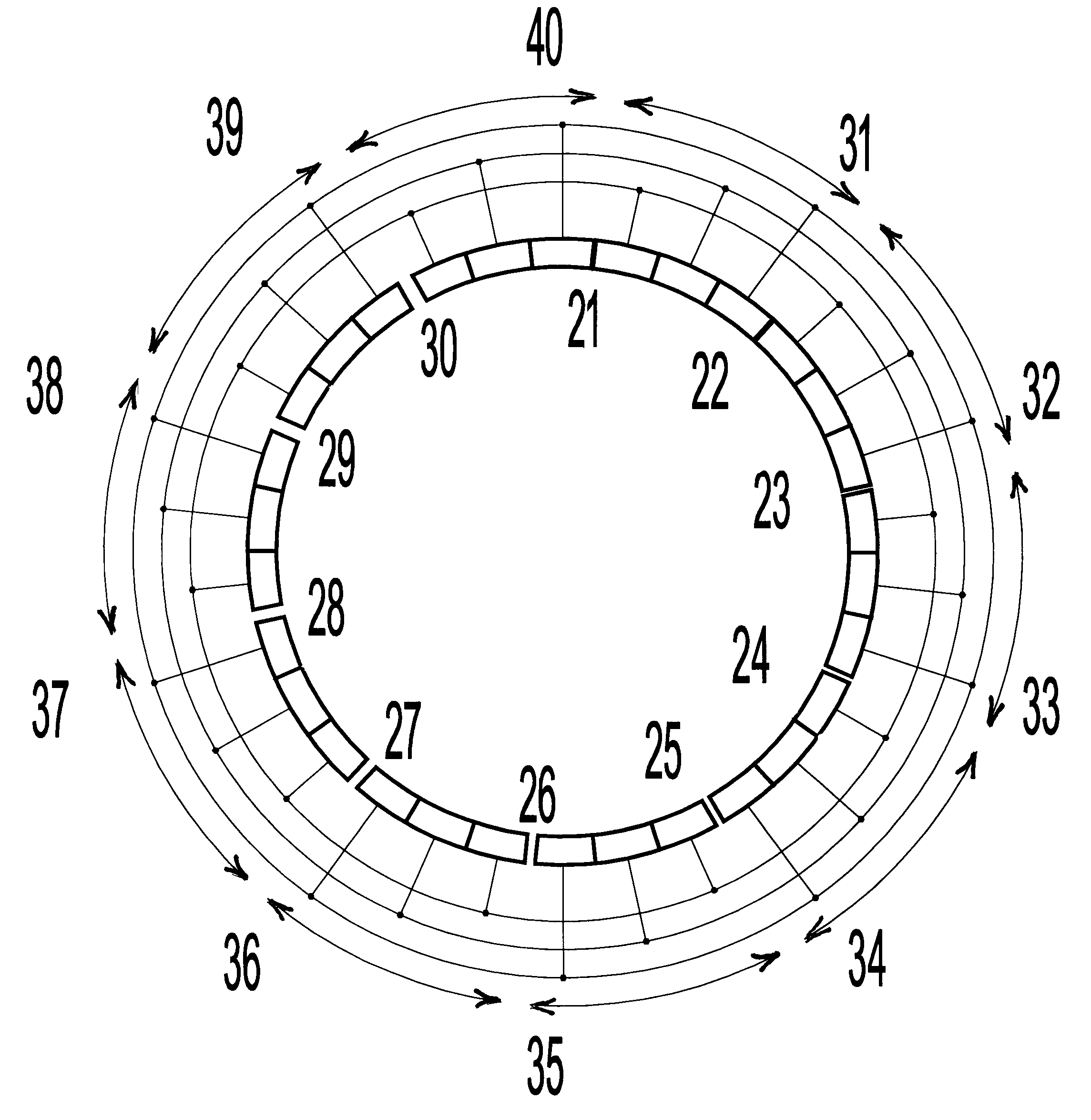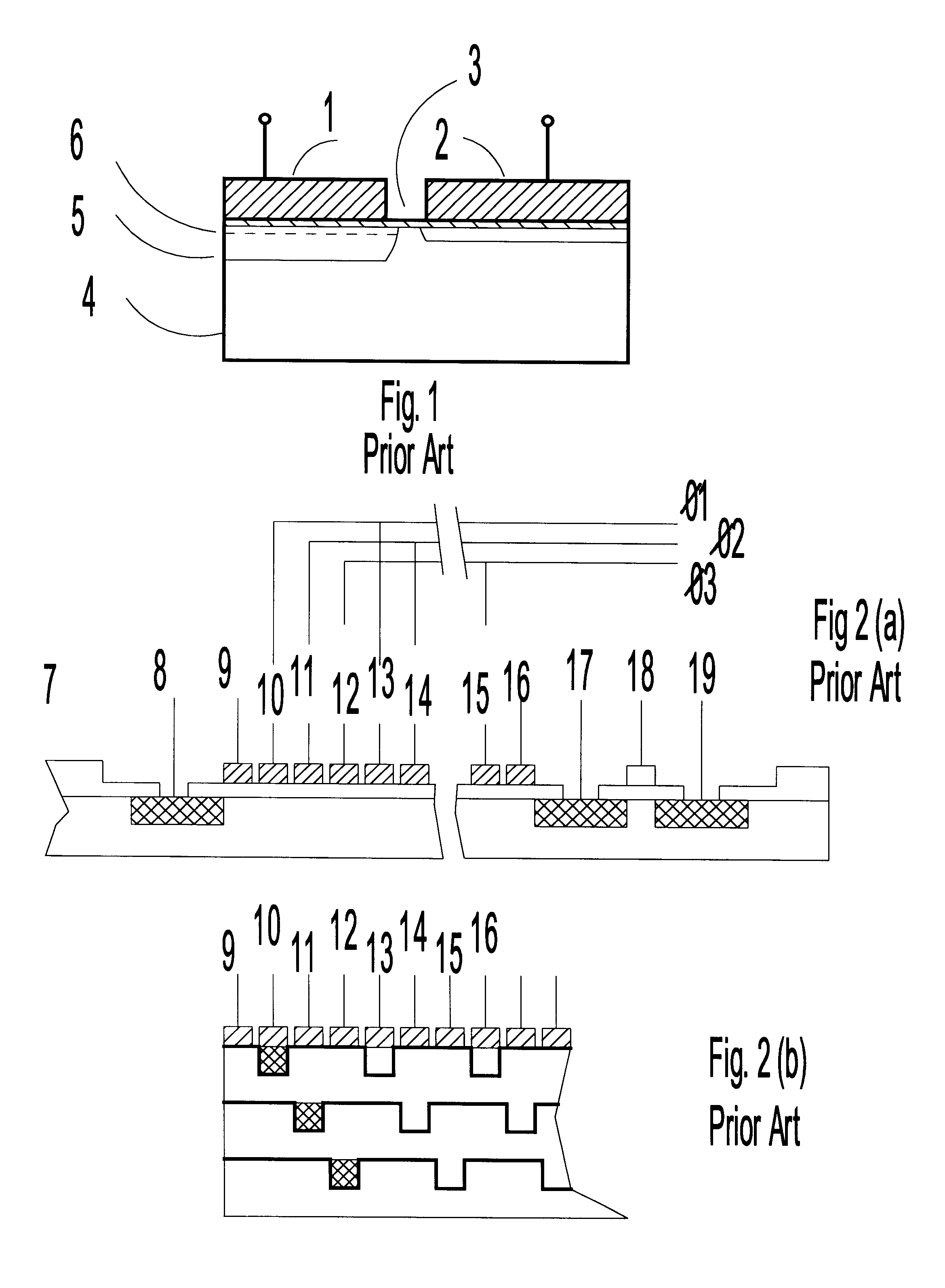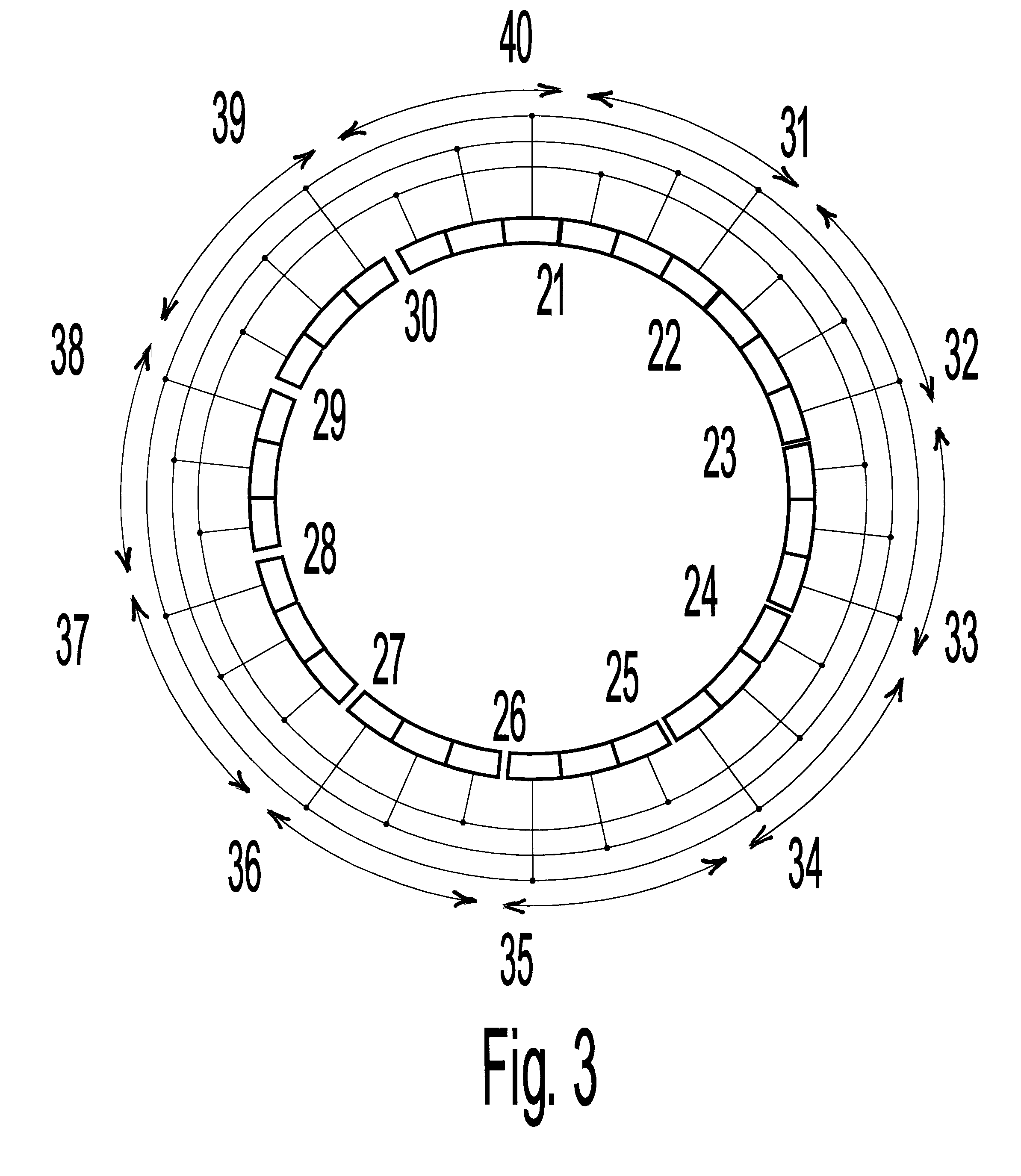Multiple state electronic device
a multi-state electronic device and electronic device technology, applied in the field of semiconductor devices, can solve the problems of system requirements for complex logic circuitry, the complexity of analog and digital integrated circuit manufacturing seems to be approaching the optical resolution limit, and the difficulty of finding electronic components having incremental multiple stable states
- Summary
- Abstract
- Description
- Claims
- Application Information
AI Technical Summary
Benefits of technology
Problems solved by technology
Method used
Image
Examples
Embodiment Construction
Referring now to FIG. 4 there is shown an embodiment for a recurring three phase 12-state CCD. Electrode groups 43, 44, 45, 46, 47, 48, 49, 50, 51, 52, 53 and 54 are charge transfer stages each including a .O slashed..sub.1 electrode, a .O slashed..sub.2 electrode, a .O slashed..sub.3 `rest` electrode, plus, in common, charge detection gate 59, with associated charge detection diodes each transfer stage. Each charge transfer stage of the recurring device is set by selected distance of the .O slashed..sub.3 `rest` electrode from the succeeding (i.e., clockwise) .O slashed..sub.1 electrode by increasingly higher charge transfer voltage requirement as described previously. In this 12-state CCD configuration ion implantation incrementally applied between successive .O slashed..sub.3 `rest` electrode and succeeding 01 electrode determines the positive voltage required for charge packet transfer thus allowing the charge packet to "rest" allowing pulsing of charge detection gate 59 at conc...
PUM
 Login to View More
Login to View More Abstract
Description
Claims
Application Information
 Login to View More
Login to View More - R&D
- Intellectual Property
- Life Sciences
- Materials
- Tech Scout
- Unparalleled Data Quality
- Higher Quality Content
- 60% Fewer Hallucinations
Browse by: Latest US Patents, China's latest patents, Technical Efficacy Thesaurus, Application Domain, Technology Topic, Popular Technical Reports.
© 2025 PatSnap. All rights reserved.Legal|Privacy policy|Modern Slavery Act Transparency Statement|Sitemap|About US| Contact US: help@patsnap.com



